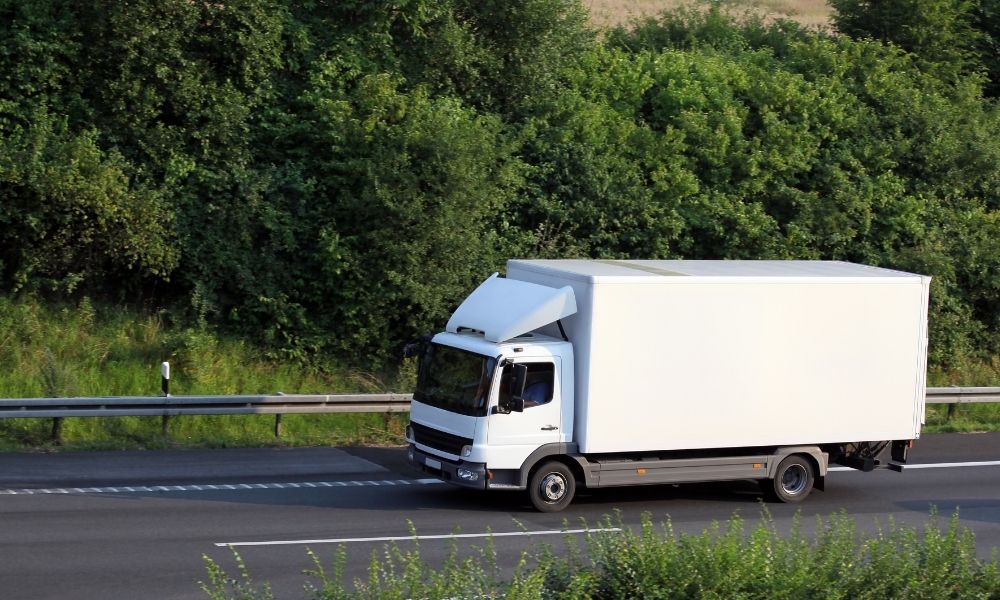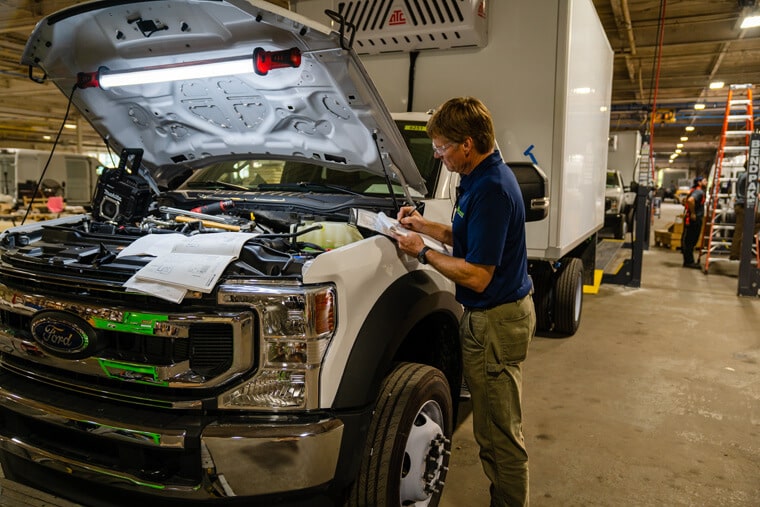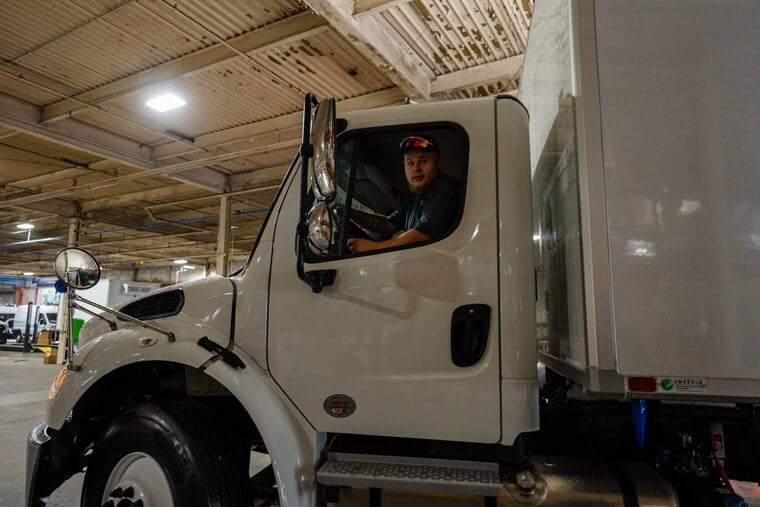
How To Stop Pallet Loads From Falling in Transit
Todd Cawley | July 20th, 2022
The prime duty of any transportation company is to ensure loads arrive at the destination in the same condition they left the facility. For this reason, it’s important to employ techniques to properly secure pallet loads. One of the key components to managing a supply chain is to avoid product damage. Improper pallet loading techniques increase the risk of damaged goods and delayed deliveries, which can cost a supply chain business time and money in the long run.
Learn how to stop pallet loads from falling in transit so you can boost productivity, move pallets more efficiently, and reduce the risk of damages to goods and workers on the road.
How To Secure a Pallet
Improper pallet loading often results in items falling during transit. Learning how to secure pallet loads is the best way to prevent this from happening. Before undergoing transportation, ensure the following steps have been covered.
Pack the Pallet
When you first pack goods, it’s important to know how to load items by weight. Start with the largest and heaviest items on the bottom and work your way to the top with the lighter items. Ensure the height of the items being loaded are equal to avoid the risk of products falling on top of each other.
Be mindful of packing equal sized boxes to help keep them level and avoid weight shifting during transit. Avoid items overhanging on the edge of the pallet to reduce the risk of products falling over the edge and becoming damaged.
Wrap the Pallet
Wrapping the pallet secures the items by applying consistent pressure and keeping them in a unit. It’s possible to wrap a pallet via hand or by using an automatic stretch wrapper. Begin wrapping the load from the bottom to secure both the items and the pallet together to avoid the load from falling.
Strap the Pallet
After wrapping the load to the pallet, it’s important to strap the entirety of the pallet down for additional security. Strapping, also known as banding, helps stabilize materials to a pallet during storage or transport. Strapping the load and pallet together helps unify the load and makes for an easier unloading process.
The most effective way to strap the pallet is by using multiple straps. It’s important to have one strap around the load itself and another strap that goes around both the load and the pallet. In addition, it’s best practice to have a strap around the edge of the pallet to further avoid the load from shifting during transit.
Additional Pallet Load Tips
Use these preventative tips to help reduce the risk of pallet loads falling in transit.
Match Pallet to Product
Different pallet designs suit loading specific products in a load. If a load doesn’t properly fit on a pallet, it increases the risk of it falling during transit. The sizing of the pallet can impact the stability of the load and increase risk of product damage.
If a pallet is too small for a load, it increases the risk of items hanging over the edge or falling off during transit. The joints of the pallet can also break from excess weight. A pallet that’s too large can also lead to a weight load imbalance and result in products falling off or becoming damaged. Be mindful of the pallet’s weight limit before securing the load for proper distribution and a lower risk of the load falling during transit.
Invest in High-Quality Pallets
An effective way to stop pallet loads from falling during transit is to ensure quality construction of the pallet itself. If you choose a pallet that’s built for the specifications of the load, the chances of the load falling over or damaging the product significantly decrease.
Consider investing in customized pallets to guarantee a specific design that’s built to keep shipments safe during transit. High-quality pallets also consist of durable materials that reduce the risk of breaking or impacting the balance of the load. Investing in high-quality pallets cost more upfront but can save your supply chain money from damaged or delayed deliveries in the future.
Protect Pallets From Moisture
It’s common to overlook this step but protecting pallets from moisture helps avoid pallet product damage during shipment. The stability of a pallet determines how easily loads can fall during transit, which means it’s crucial to protect pallets from external damage.
Moisture plays a significant role in damaging pallets, which increases the risk of loads falling and product damage in general. If wooden pallets become saturated with moisture, it increases the risk of developing pallet mold. The risk of pallet mold is critical to monitor when transporting goods for the food industry, such as a beverage delivery truck or pharmaceutical cold chain operations.
These growths inhibit pallets from being usable and ultimately violates any health and safety policies. If the load being transported doesn’t fall from an unstable foundation, it will likely have to be disposed of upon arrival for health code violations.
Use Proper Packaging Practices
Adopting proper loading practices provides added security that products won’t fall during the transportation process. Ensure the products being loaded are being placed by the required procedure to avoid product damage during transit. In addition, be mindful of the amount of space between products and avoid them being compressed or too spaced apart.
Inspect products for specific packaging materials to protect the product from excessive movement or impact. Routinely examine items for holes, punctures, dents, or water damage to avoid these issues from impacting the balance of the pallet load.
If a load falls or become damaged, it’s helpful to have the appropriate protocols in place to avoid future incidents. Avoid damages to the pallet load by using spill-resistant tape to secure the packaging and prevent liquids from damaging the product.
Investing in high-quality vehicles is a critical first step to advance your supply chain process. Emerald Transportation Solutions is your one-stop shop for all your delivery vehicle needs. Explore our broad selection of insulated trucks, vans, and reefers to optimize your transportation process. Reach out to us with any questions!
Related Articles
Contact Us
Feel Free To Contact Us If You Have Any Questions
What does under DOT mean?
Questions regarding DOT requirements come up often. 10,000 lbs GVW (gross vehicle weight) and over are commercial vehicles that fall under the Department of Transportation regulatory requirements.
What is the difference between GVW and payload?
GVW or Gross Vehicle Weight is the entire weight of the vehicle including the payload. The payload weight represents the amount of cargo you are hauling.
What is a self-powered unit and a vehicle-powered unit?
A self-powered unit has its own fuel source and will run independent of the truck. This is the heaviest and most expensive option. While vehicle-powered units run off the engine via a compressor mounted on the engine. These are less expensive and lighter in weight but you must run the truck or plug the electric standby into shore power.
What does K-factor mean and why is that important?
K-factor is a term that stands for the overall insulating value of the container (truck body). Quite simply the lower the K-factor the better the truck body will be able to maintain a given temperature and require less energy to do so.
How much lighter is a Poly Van vs a US spec body?
Poly Van bodies are very light. On average we estimate we are 75-150 lbs per foot lighter than a traditional sheet and post foamed in place body. These weight savings translates to less fuel burn and less CO2 emissions, along with added payload, the most important benefit.







